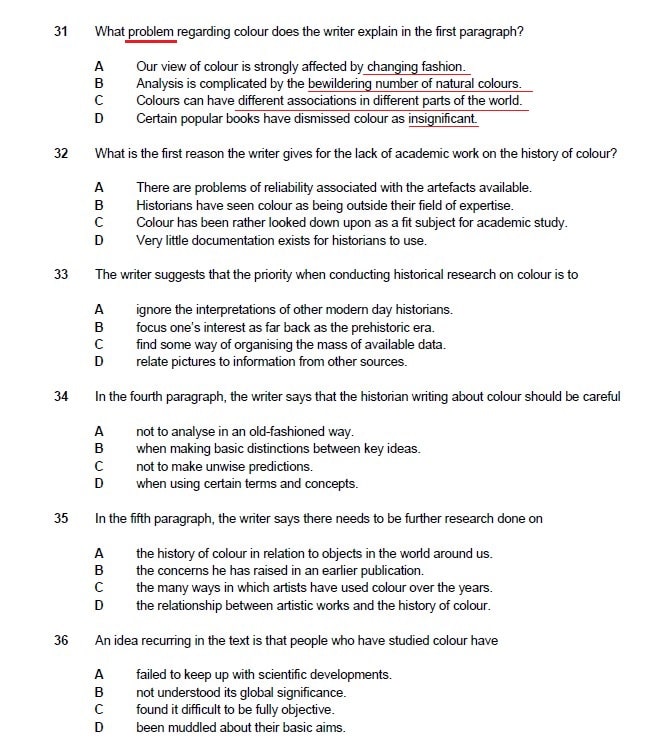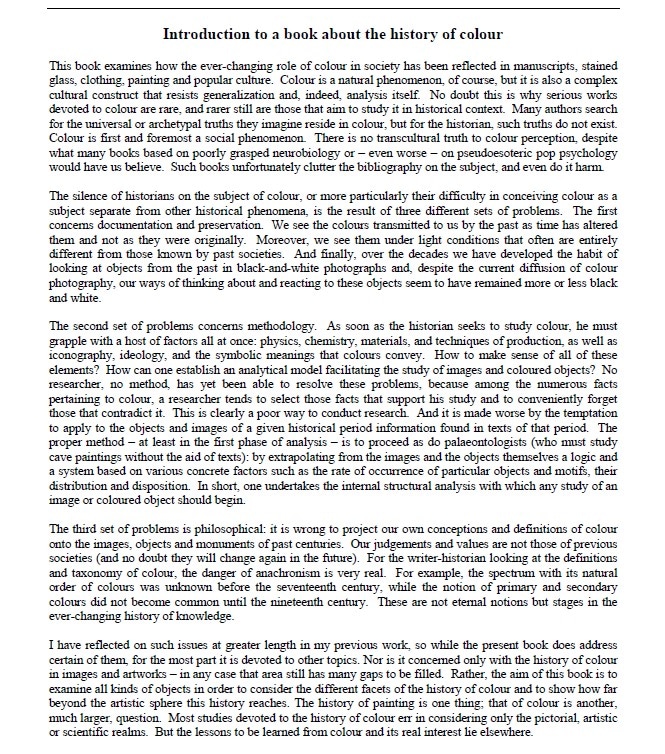
Practica tu Inglés con este examen de Reading de Cambridge CAE Part 5 nivel Avanzado (C1)
You are going to read the introduction to a book about the history of colour. For questions 31 – 36, choose the answer (A, B, C or D) which you think fits best according to the text.
You should try to finish the exercise in 15 minutes. Use this timer to help you.
There is a space below the exercise where you can write your answers.
My advice – read the first question before you read the text. Analyse the differences in each option. Then scan the text until you reach the section you think is relevant. Then do the same with the second question. This will save you time, which could be important later.


Use this notebook to write your provisional answers. When you finish, check your answers at the bottom of the page.
Aethelflaed & the Rockstar (B2 / C1)
Libro Electrónico (pdf.)_________ 83 páginas / €9,95

Answers!
Click on the buttons to see the answers.
C
“Many authors search for the universal or archetypal truths they imagine reside in colour, but for the historian, such truths do not exist. Colour is first and foremost a social phenomenon. There is no transcultural truth to colour perception…”
A
“The first concerns documentation and preservation. We see the colours transmitted to us by the past as time has altered them and not as they were originally.”
C
The proper method – at least in the first phase of analysis – is to proceed….by extrapolating from the images and the objects themselves a logic and a system based on various concrete factors such as the rate of occurrence of particular objects and motifs, their distribution and disposition.
D
“the spectrum with its natural order of colours was unknown before the seventeenth century, while the notion of primary and secondary colours did not become common until the nineteenth century.”
D
“Nor is it concerned only with the history of colour in images and artworks – in any case that area still has many gaps to be filled.”
C
“our ways of thinking about and reacting to these objects seem to have remained more or less black and white…..a researcher tends to select those facts that support his study and to conveniently forget those that contradict it….. is wrong to project our own conceptions and definitions…..etc.






